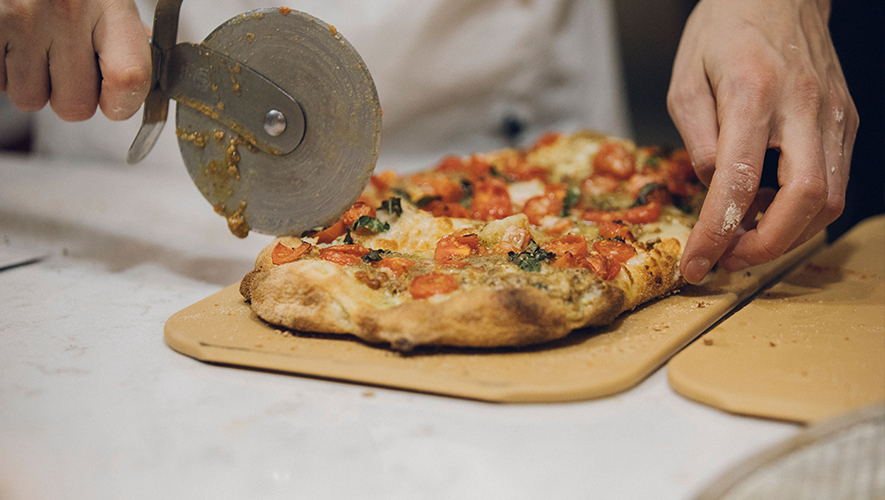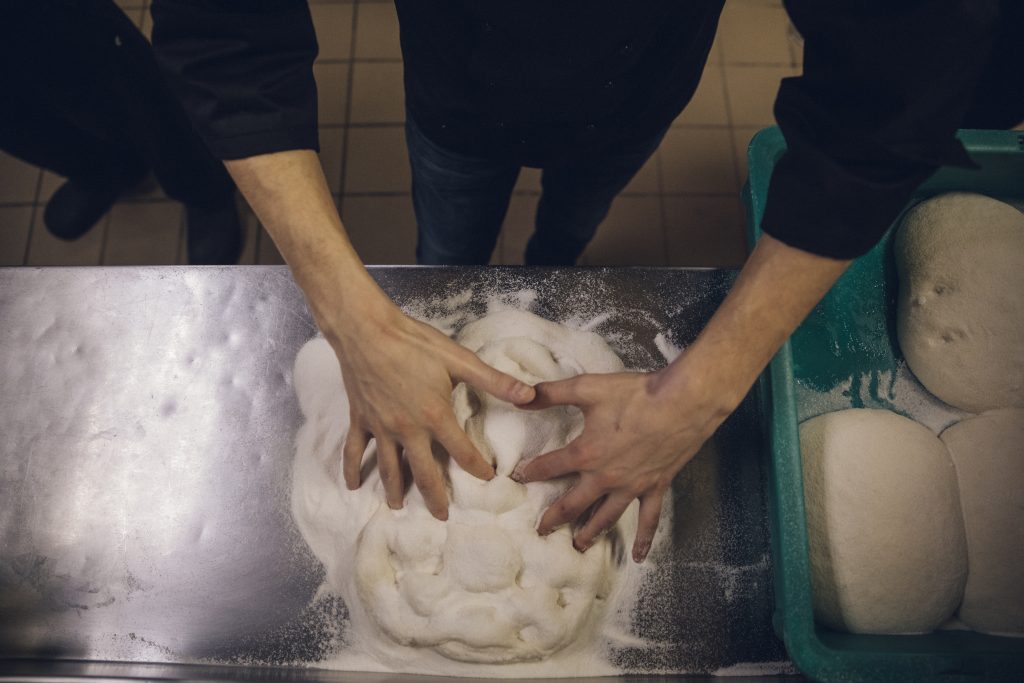Bloating is an unfortunate consequence of eating pizza. But pizza often shares the spotlight with your most memorable experiences, and the discomfort of bloating spoils what was supposed to be a good time. Whether it’s pizza night with your family, fine dining with your partner, or enjoying a slice courtside, bloating after pizza can happen to anyone at any time.
With that being said, we all have a love-hate relationship with pizza. There’s no denying that it’s a delicious meal that brings people together, but it has a bad habit of leaving us with a heavy, uncomfortable feeling in our stomachs. Eat one slice too many and the rest of the day is ruined. Most of us experience side effects right after eating pizza that make us regret our meal choice.
Common side effects of eating pizza:
- Bloating
- Fatigue
- Constipation
- Swelling
- Abdominal discomfort
The immediate side effects of eating pizza are bad enough. But overindulging in pizza can eventually lead to weight gain, acne, and a higher vulnerability to various diseases.
How Long Does Pizza Stay in Your Stomach?
Pizza dough is full of carbs and fats, often lacking the fiber and nutrients necessary for smooth digestion. Due to the amount of starches in traditional pizza, it takes about 6-8 hours to digest. So if you eat pizza for lunch, that heaviness can linger in your stomach for the rest of the day, often leading to gas and pain. Pizza is supposed to be comfort food, but it tends to do the opposite.
Despite these adverse effects of indigestion, people still eat pizza on a daily basis. Why? The answer is devastatingly simple: because it tastes good! Unfortunately, enjoying one of our favorite foods comes at a cost. The painful bloating after pizza can really ruin moments that were supposed to be special. Show your body some love by feeding it healthy, authentic Italian flavors without regretting it later!
Pinsa: The Secret to Digesting Pizza Faster
Getting healthy starts with cultivating a healthy relationship with pizza. How do you do that? Well, we’ll let you in on a centuries-old secret. It’s called pinsa. A modern take on an ancient formula, pinsa is a naturally vegan, gluten-friendly pizza crust. It has no added sugars or saturated fats, so the ingredients are as artisanal as they are natural. And with a non-GMO blend of zero wheat, rice, soy, and sourdough flours, pinsa crusts are engineered for easy digestibility. This healthy upgrade to traditional pizza is also full of flavor, proving that taste doesn’t need to be sacrificed to avoid bloating after pizza!

Pizza Without The Bloating
Carefully crafted with fermentation, a blend of non-GMO flours, and a distinctively high level of hydration, Pinsa Romana America has the science to prove that delicious pizza crusts can be digested faster!
3 Reasons Why Pinsa is Easier to Digest Than Pizza
1. Designed for Fermentation
Pinsa’s unique fermentation process is the key to a healthy pizza crust with a powerful flavor profile. Pinsa Romana America pinsa crusts endure a 48-72 hour cold fermentation process, creating a lift that adds volume to its airy pockets. Not only does this allow the pizza dough to be hand-pressed with artisanal flair, but it also results in a lighter, crispier crust that is easier for your body to digest.

During this fermentation process, the acids and the enzymes from the yeast have sufficient time to mellow, softening the gluten-forming proteins. This process is what makes pinsa crusts so easy to enjoy without the negative after-effects.
2. Blended with Sourdough
Pinsa Romana America has a curated blend of flours designed to help alleviate the discomfort of bloating after pizza. By incorporating sourdough into the pinsa recipe, the crust develops more flavor and more nutrients. Sourdough relies on a mixture of water and flour to develop into wild yeast. This wild yeast turns into lactic acid, which gives sourdough that distinctive tang to its taste. The bacteria from the lactic acid interacts with the pizza dough to form more nutrients (folate, magnesium, and potassium). These nutrients being present in the pinsa crust make it easier for your body to absorb.
Sourdough is smoother to digest than traditional pizza crust because it acts as a prebiotic, meaning that the fibrous flour helps to feed healthy bacteria into your intestines. The acid in sourdough also degrades gluten, so it doesn’t sit in your stomach all day. Simply put, pinsa crusts make enjoying a mouthwatering meal worry-free!
3. Infused with High Hydration
Pinsa crusts consist of up to 80% hydration. This high hydration gives the gluten ample opportunity to soften within the dough, making it easier to digest. With significant water content to ease post-meal discomfort, pinsa’s recipe emphasizes that pizza crust can be as gluten-friendly as it is gut-friendly.
Say Goodbye to Bloating After Pizza with Pinsa Romana America
We know that pizza and love go hand-in-hand. Memories are made at the dinner table, so it’s difficult to turn down a delicious pie when you’re surrounded by friends and family. That’s why we make it a priority to offer you a Roman-style pizza crust that leaves you feeling warm and satisfied without the fine print.
Fueling yourself with your favorite food while also maintaining a stable digestive system is the best way to show your body love. Our innovative par-baked pinsa crusts are perfect for anyone wanting to say goodbye to bloating after pizza! Pinsa Romana America pinsa crusts will assure your food-filled memories have happy endings.
Ciao!
For more information on Pinsa Romana America’s crusts, contact us!
